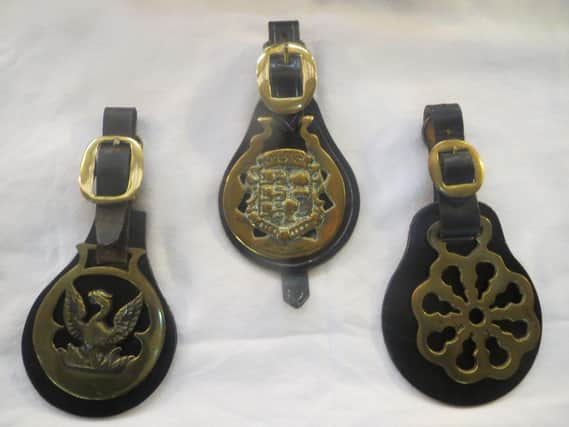Horse brasses were used to fend off evil spirits


Last weekend was historic for a somewhat sad reason, with the cancellation of Appleby Horse Fair for only the second time in 250 years (the first was due to foot and mouth in 2001).
Since man first domesticated horses, we have been using decorative talismans to protect these valuable assets from evil spirits, and horse brasses as harness decorations first appeared in England in the 18th century.
Advertisement
Hide AdAdvertisement
Hide AdFashionable 19th century gentry decorated their carriage harness with silver family crests, worth hundreds to even thousands of pounds today.
Carters and waggoners soon began copying these decorations in the form of brass ovals and shields.
The earliest handmade brasses can be recognised by the presence of hammer marks on the back. They are very rare and prized by collectors.
Around the mid 19th century the ‘pendant’ type of horse brass we picture today became very popular. By now local smiths were casting brasses in moulds. Industrial casting techniques have generally led to less intricate designs, so watch out for modern brasses which are not as well finished as their antique ancestors.
Advertisement
Hide AdAdvertisement
Hide AdCollecting horse brasses as decorative items for the home (and public house!) started as long ago as 1895, as we can see from regular articles in contemporary journals. It remains a popular hobby today, with the National Horse Brass Society founded in 1975 a great source of historical, collecting, and valuing information.
Apart from the exceptionally rare brasses, fine examples can be still bought relatively cheaply and the diverse nature make them a fun decorative collectible. These are from a selection in the centre priced between £5 and £10. Authenticated age, fine detail, and accompanying leatherwork can all add value.
Themes are fun to collect: agricultural objects like sheaves of corn, a bull or chicken; trade brasses depicting churns and barrels; a fox or hound for hunting. Royal and commemorative brasses started with Queen Victoria and continue to mark our Queen’s jubilees.
I suppose the modern equivalent of horse brasses are the totems we dangle from our car mirrors. I’ve not yet seen a brass depicting a laptop, credit card, or coffee cup, but it may only be a matter of time!